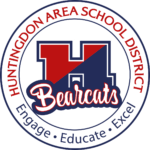By: Kim Rieffannacht, Ed.D.
Hiring is one of the most, if not the most, important things a district can do. Personnel are the greatest resource and investment within a school district. People create the community, build relationships with learners and work tirelessly to meet their needs on a daily basis. This and so much more creates a desperate need around the hiring process, to find the right person to complete a team when a vacancy is created. The great question is how do you know who Mr. or Ms. Right is for the particular position? Is there any way to know?
There are fair hiring practices and regulations in place to minimize discrimination and it is critical to live within those limits; however, there is much more to the process of hiring. Often we find there are two or more equally qualified candidates willing to fill a position; who is the right choice? There is a great deal of research and conversation around this topic in education and many other professional fields. Philosophies of interviewing and hiring change frequently, and perhaps that is because there is no really good way to discern if a person is right for a position in just a few short interactions in an artificial environment.
Hiring is not generally a unilateral decision, but rather one undertaken by a committee and over several rounds of interviews. Data is collected, opinions about the interview are discussed and ultimately a decision is reached. A hiring committee is critical because one perspective cannot see or pick up on everything the candidate is communicating. Communication goes beyond answers to questions and reaches into body language, tone, inflection and word choice. When a committee decides there is no candidate that fits the bill it is equally, if not more, difficult as many seemingly qualified candidates. There is always a level and sense of gambling when making a hiring decision.
One of the greatest tools a hiring committee can have as they enter an interview process is a clear vision of where their team is going. This should shape the entire interview process. Here in Huntingdon we are working towards developing a Mass Customized Learning (MCL) model of education. We are in our infancy; however, we know this is the vision, the goal, and we working towards identifying team members that will work to move that vision forward. This creates a purpose around the process and a shared understanding of not only the importance of the vision, but also the importance of hiring for the team that is working toward fulfilling that vision. This is often overlooked in the hiring process, but a concise vision is powerful throughout the process.
Vision is powerful for the interview committee to have, but it is equally as powerful to understand candidates will not come in understanding the vision. Most candidates interviewing will not have an understanding of what the district’s vision is; however, as a committee, the interviewers need to look for someone with a growth mindset that can become a contributor to the vision. A successful candidate will be able to adopt the vision and begin making decisions that further the vision in a short amount of time. That being said, the power of the vision should come through the interview to the candidate and help him or her decide if that district is a right fit for them, as much as the committee is trying to find the right fit.
Vision should not be a secret. It should not be hidden under a bush. A vision needs to shine through the people within an organization. There needs to be action surrounding the vision. This is the guiding force for major decisions, including hiring. If vision is not shining through those in the organization and being used as a guiding force for decision making, I dare say it may not be an effective vision, or a vision at all. Henry Ford said, “A vision without execution is just a hallucination.”
The win happens when you find the person that fits, and over time it becomes even more apparent that they were the best choice for that position. As mentioned above, the personnel within a district are the greatest resource. As the hiring process unfolds, committees need to understand, as much as possible, how the candidate will fit into the current team. Internally committee needs to ask them self if they see the candidate being able to handle the learning curve that is ahead and if they will make valuable contributions to the learning environment.
This process is not easy and it is not for the faint of heart. It is easy to become discouraged with the process. This business is a people business, that means sometimes people’s lives require a change. Each reason for leaving is different and important for the individual. Having honest conversations and creating the best interview process possible should always be the goal when hiring a new team member. An established team is at times a luxury within a school district; however, each hiring process is an opportunity to bring a fresh new perspective to a team. The leadership and committee need to have the attitude of opportunity when entering this process.
